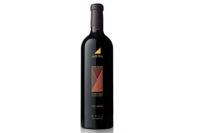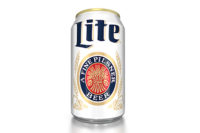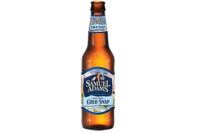As the economy stabilizes, consumers are trading up for the premium beer offerings available through the imported beers segment, says Edward Hyseh, U.S. research analyst for Euromonitor International, Chicago. “Imported beers did much better than domestic beers,” he says. “Imported beers grew in terms of volume by 4 percent and in value nearly 7 percent.”
| Click here to go back to the 2014 Beer Category Report landing page. |
In fact, 43 percent of U.S. consumers have consumed imported beer in the last six months, according to a report from Chicago-based Mintel released in December 2013 titled “Beer – US.” This trend is happening in spite of the fact that imported beers tend to be priced higher than domestic beers, Euromonitor’s Hyseh notes. However, consumers are willing to pay that extra amount to experience beers that are different than the domestic beers with which most consumers already are familiar, he says.
However, this price gap between imported beers and the rest of the category is shrinking, says Danelle Kosmal, vice president of client services with New York-based Nielsen. “Pricing for imports has grown, but not at the same rate as the category,” she explains. “The average case price for imports was up 0.7 percent; … the category average case price was up3 percent, so [imports are] growing at a much slower rate than the rest of the category in terms of pricing.”
Plus, exchange rates may help give this segment an advantage in the near future, according to Santa Monica, Calif.-based IBISWorld’s September 2013 “Breweries in the U.S.” report. “An appreciating U.S. dollar will be the main influence on both the demand for industry exports and the ability of imports to compete with local brewers,” it states. “Imports are forecast to resume growth, increasing at an average annual rate of 1 percent during the next five years to $4.2 billion in 2018, as consumers continue to shift to what they perceive as high-end beer, including more expensive foreign imports.”
Much of the current import growth is being driven by Mexican beers, Nielsen’s Kosmal notes. “When we look at their trends for 2013, they were growing twice as quickly as total imports,” she says. “Mexican import growth was at 11.1 percent last year, while [total] import growth was at 5.3 percent.” By comparison, Canadian imports were down 6.5 percent last year, and European imports were down 2.1 percent, she says.
Currently 48 percent of imported beer sales are from Mexican beers, IBISWorld reports. Of the remaining market share, Dutch beers, which include the Heineken N.V. portfolio, boast 24 percent; Belgian beers and Canadian beers each make up 7 percent; and beers from other countries compose 15 percent, it states.
Part of the Mexican beer segment’s growth is owed to the growing Hispanic population in the United States, Kosmal points out. “We see that a lot of the growth within Mexican imports is coming from specific regions in the United States, particularly in the Pacific and Central regions,” she explains. “We know that a lot of that is driven by Hispanic populations.” As the U.S. Hispanic population continues to grow, Nielsen expects that Mexican beers will continue to experience growth as well, Kosmal adds.
The other part of the growth is credited to aggressive marketing by these brands, such as the prominent Dos Equis commercials featuring the Most Interesting Man in the World, IBISWorld states. Beyond his fame in the Dos Equis commercials, the Most Interesting Man in the World keeps the brand top-of-mind among social media users. Most of the 100-1,000 Facebook posts generated each day by Dos Equis fans are directly linked to this character campaign, according to the brand.
The Mexican beer brand of Heineken USA, White Plains, N.Y., has parlayed its mascot’s popularity into many of its on- and off-premise campaigns as well. For example, in early 2013, the brand hosted its “Game Changer” campaign during the NFL playoffs and NCAA tournament. In addition to point-of-sale materials and cross-promotions off-premise, the campaign’s on-premise portion invited patrons to submit their own versions of the TV legend lines to the Most Interesting Legend Line bracket tournament. The best legend lines were selected by each participating bar’s staff and showcased on their official Most Interesting bracket posters. At the end of the tournament, patrons were invited to return to the accounts to vote for their favorite lines. Tournament winners earned bragging rights as well as localized Dos Equis rewards, the company says.
Dos Equis also keeps itself on consumers’ radar with seasonal promotions. This spring, the brand is extending its Dos de Mayo program, which it launched in 2013 in celebration of the Cinco de Mayo holiday on May 5. This year’s campaign will include limited-edition bottles and labels featuring Cinco de Mayo-themed artwork; cross-promotions with Avocados from Mexico, RiceSelects, La Tortilla Factory, Cholulu Hot Sauce and 1800 Tequila; and Most Interesting Man standees off-premise, as well as Cinco de Mayo-themed party items on-premise. The on-premise props will direct consumers to use the Dos Equis custom photo app, which will feature Cinco de Mayo-themed frames and a component that allows fans to add the Most Interesting Man to their photos.
Jeff Nowicki, chief strategy officer with Bump Williams Consulting Co., Stratford, Conn., argues that much of imported beer’s growth is being driven by “the resurrection” of Corona, a Mexican beer brand of Crown Imports LLC, a Chicago-based division of Constellation Brands Inc. “Obviously, their marketing … ‘Find Your Beach’ is resonating with the consumer,” he says. Corona Extra topped Chicago-based Information Resources Inc.’s (IRI’s) list of the top imported beers at more than $1.2 billion for the 52 weeks ending Dec. 29 in supermarkets, drug stores, mass merchandisers, gas and convenience stores, military commissaries, and select club and dollar retail chains. Corona Light ranked fifth with more than $216 million in sales, IRI reports. Modelo Especial, a sister brand of Corona, charted the highest growth in the imported beers segment at 24.5 percent growth in dollar sales compared with the prior-year period, it adds.
Beyond Mexican imports, some specific European imports are helping to bolster the segment as well. Belgian beers were up almost 18 percent, Bump Williams’ Nowicki says. “They’re the fifth largest country of origin, and that was primarily driven by Stella [Artois],” he says. The brand of Anheuser-Busch InBev, Leuven, Belgium, was up more than 17 percent in dollar sales for the 52 weeks ending
Dec. 29 in measured channels compared with the prior-year period, IRI reports. Guinness, an Irish beer brand imported by Diageo North America, Norwalk, Conn., was the only other European brand among IRI’s Top 20 list of imported beers that experienced growth in 2013, with its Guinness Draught and Guinness Extra Stout both ranking in the lineup.






